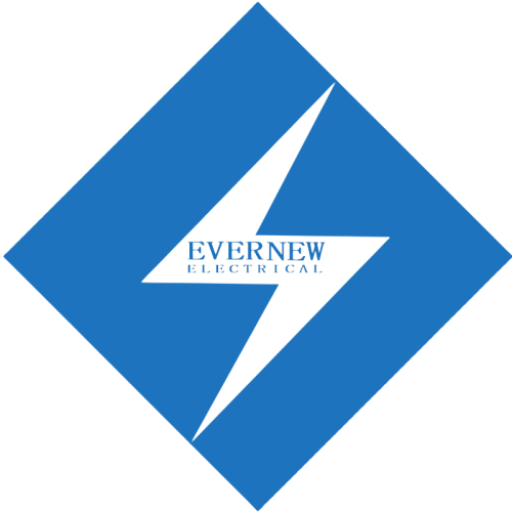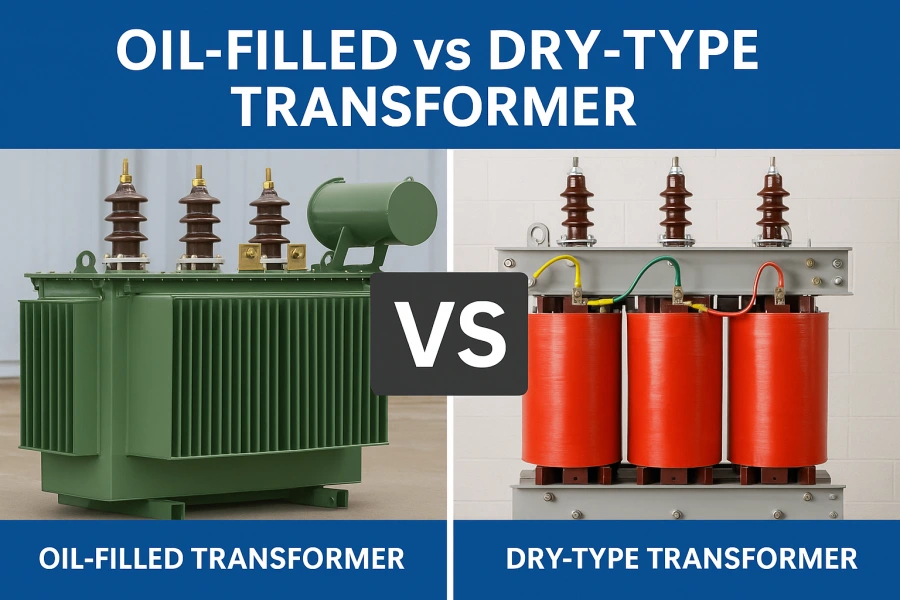Introduction: Why Choosing the Right Transformer Type Matters
Transformers are vital components in any electrical system, stepping voltages up or down to meet power distribution needs. Choosing between an oil-filled and a dry-type transformer isn’t just a technical decision—it directly impacts safety, installation conditions, long-term maintenance, and overall project cost. Whether you’re designing for a commercial building, an industrial facility, or a utility grid, understanding the key differences is crucial.
What Is a Dry-Type Transformer?
A dry-type transformer is air-cooled and uses solid insulation rather than oil. The windings are typically cast in resin or sealed in vacuum pressure impregnation (VPI) systems to protect against moisture, dust, and contaminants.
Features:
Oil-free, air-cooled (natural or forced)
Typically installed indoors
Minimal environmental risk
Often quieter in operation
These are commonly used in commercial buildings, hospitals, schools, and any location where fire safety and environmental cleanliness are priorities.
Read More:What is Dry Type Transformer
What Is an Oil-Filled Transformer?
An oil-filled transformer uses mineral oil or biodegradable insulating fluids for both insulation and heat dissipation. The oil circulates through the core and windings, carrying heat to the surface where it is released.
Features:
Liquid-cooled with mineral oil or natural ester
Excellent for high-power or outdoor applications
Compact footprint for same capacity
Longer overload capability
These are often used in outdoor substations, heavy industrial zones, and energy projects like solar or wind farms.
Learn More:Comprehensive Guide to Types of Electrical Transformers and Their Applications
Pros and Cons: A Direct Comparison
🔷 Dry-Type Transformers
Pros:
No risk of oil leaks or contamination
Lower fire hazard
Suitable for indoor or enclosed spaces
Requires less frequent maintenance
Cons:
More expensive per kVA
Larger and heavier
Typically limited to <5 MVA
🔶 Oil-Filled Transformers
Pros:
Higher efficiency and better thermal performance
More compact and cost-effective for higher ratings
Ideal for harsh environments and outdoor use
Cons:
Requires routine oil quality testing and maintenance
Potential fire and environmental risk if leaks occur
Indoor use may require additional containment and ventilation
Ideal Application Scenarios
| Scenario | Recommended Type |
|---|---|
| Indoor installation | Dry-type |
| Commercial/residential buildings | Dry-type |
| High-power outdoor installations | Oil-filled |
| Substations or heavy industry | Oil-filled |
| Fire-sensitive or eco-sensitive areas | Dry-type |
| Remote/rural utility infrastructure | Oil-filled |
Cost, Size, and Maintenance Considerations
| Feature | Dry-Type Transformer | Oil-Filled Transformer |
|---|---|---|
| Upfront Cost | Higher | Lower |
| Maintenance Needs | Low | Moderate (oil monitoring) |
| Size/Footprint | Larger | More compact |
| Cooling Method | Air | Oil circulation |
| Environmental Risk | Very low | Medium (oil handling) |
| Typical Power Range | Up to ~5 MVA | 25 kVA to 100+ MVA |
| Lifespan | 20–25 years | 25–30 years |
Which One Should You Choose?
When selecting the right transformer, consider:
Installation Location: Indoors or outdoors?
Safety Requirements: Are there strict fire codes or environmental policies?
Power Needs: Is your system under 5 MVA or does it require higher capacity?
Maintenance Capabilities: Can your team manage oil checks and containment?
Budget: Is upfront cost or long-term efficiency more important?
There’s no universal answer. Dry-type is ideal for safety-sensitive indoor settings, while oil-filled is better for high-power or utility-grade outdoor use.
Why Choose Our Transformers?
We manufacture and supply both oil-filled and dry-type transformers with global certifications including UL, ANSI, IEC, and CE. Our products are trusted by customers across North America, Europe, South America, and Asia, and we support OEM/ODM services, fast delivery, and competitive pricing.
Contact us today for expert guidance and a free quote tailored to your project.

